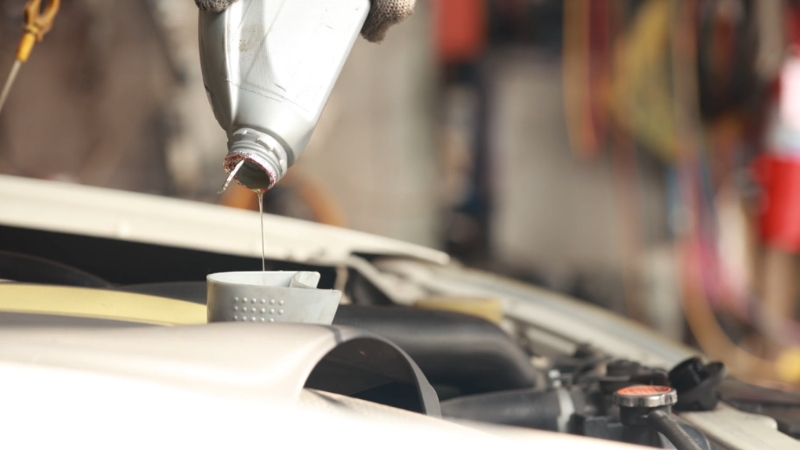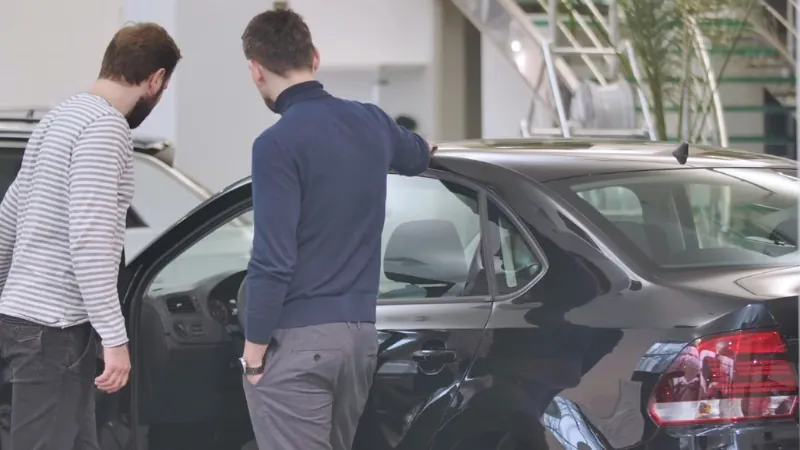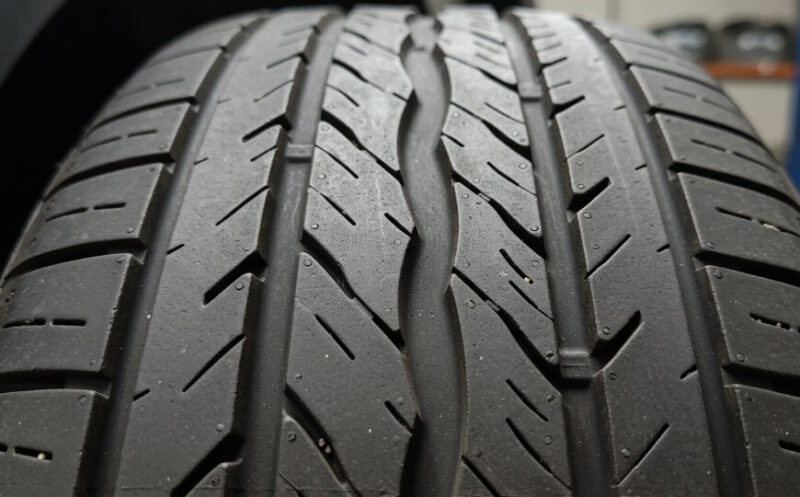
Share Post:
You probably don’t think about tire tread depth until someone at a shop mentions it, or worse, until your car starts slipping in the rain.
But here’s the truth: those grooves in your tires are doing a lot more than just collecting pebbles. They’re your front line of defense against hydroplaning, skidding, and long braking distances.
In the US, there are laws that dictate how shallow that tread can get before it’s legally considered unsafe. But the rules vary more than most people realize.
So let’s get clear on what’s actually required, what changes from state to state, how you can measure your tread at home, and why waiting until the bare legal minimum might be a dangerous gamble.
Table of Contents
ToggleThe National Standard – 2/32 Inch for Passenger Vehicles

Most drivers are expected to replace their tires once the tread hits 2/32 inch, or about 1.6 mm. That’s the depth most states use as the legal minimum.
It’s also the height of those raised rubber bars running across your tire’s grooves, called tread wear indicator bars. Once your tread wears down to those bars, your tire has officially reached the end of the road, legally speaking.
But here’s the kicker: that 2/32 inch limit is just that, a limit. It’s not a suggestion. If your tire tread falls below it, you’re driving illegally in most of the country, and potentially putting yourself and others at risk.
Why That Number?
At 2/32 inch, your tires still have some grip left, but not much. That shallow tread can’t channel water away from the contact patch efficiently, which increases the risk of hydroplaning. It also lengthens braking distances, especially in wet conditions.
So while your tires might technically pass a safety inspection at this point, their ability to perform in real-world scenarios is seriously compromised.
State-by-State Variations
Even though 2/32 inch is the national go-to, some states have their own ideas about tire safety. And in a few cases, they’ve either raised the bar or removed it altogether.
Here’s a breakdown of how some states differ:
| State/Region | Minimum Legal Tread Depth | Notes |
| Most US States | 2/32 inch (1.6 mm) | Follows federal DOT safety inspection standards. |
| California | 1/32 inch (0.8 mm) | Legal, but many experts argue it’s below safe traction thresholds. |
| Idaho | 1/32 inch | Same situation as California. |
| Texas | 3/32 inch (2.4 mm) | Required to pass state inspections, but not the official legal minimum. |
| Arkansas, Montana, SC, WV, NM, ND | No legal limit | No set law, but worn tires may still violate general safety rules. |
In states without a legal minimum, you’re technically not breaking a specific tread depth law, but if your tires contribute to a crash, you could still face serious consequences.
Commercial Vehicles Have Stricter Rules and Higher Standards
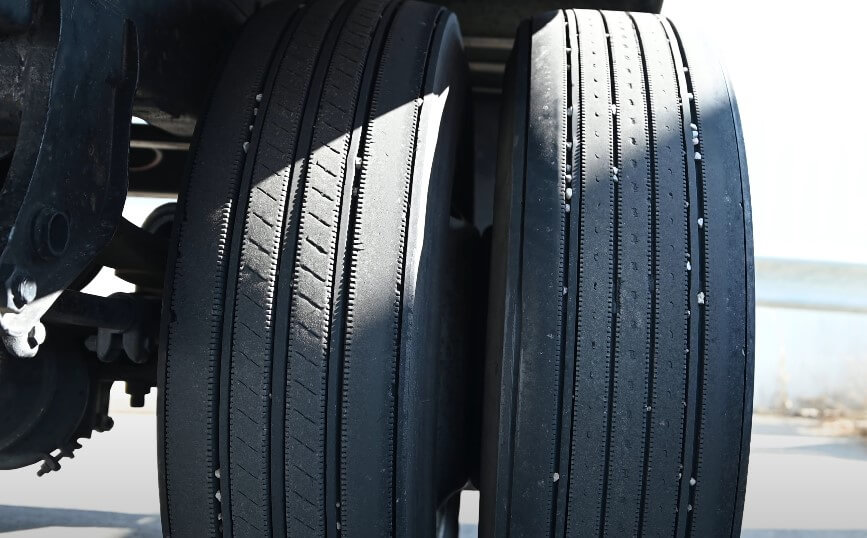
Tires on commercial vehicles carry more weight, literally and legally. Whether it’s a bus, long-haul truck, or delivery van, the tires on these vehicles are regulated more tightly.
| Vehicle Type | Minimum Tread Depth | Where Measured |
| Passenger Vehicles | 2/32 inch | Measured in main grooves |
| Commercial – Front Tires | 4/32 inch | Steering axle (truck/bus front) |
| Commercial – Rear/Other | 2/32 inch | Trailer tires, rear tires |
| Motorcycles, Specialty | 2/32 inch | Same as passenger standard |
The Federal Motor Carrier Safety Administration (FMCSA) sets these rules. And if a tire on a commercial vehicle falls below the threshold, the Commercial Vehicle Safety Alliance (CVSA) can mark it out of service until repairs are made.
Why the extra stringency? Because when an 80,000-pound rig loses traction, the consequences are both expensive and catastrophic.
Pro tip: You could explore options like Hubtrac tires for robust commercial‑grade tread built to FMCSA standards.
How to Measure Your Tire Tread (Without Fancy Tools)
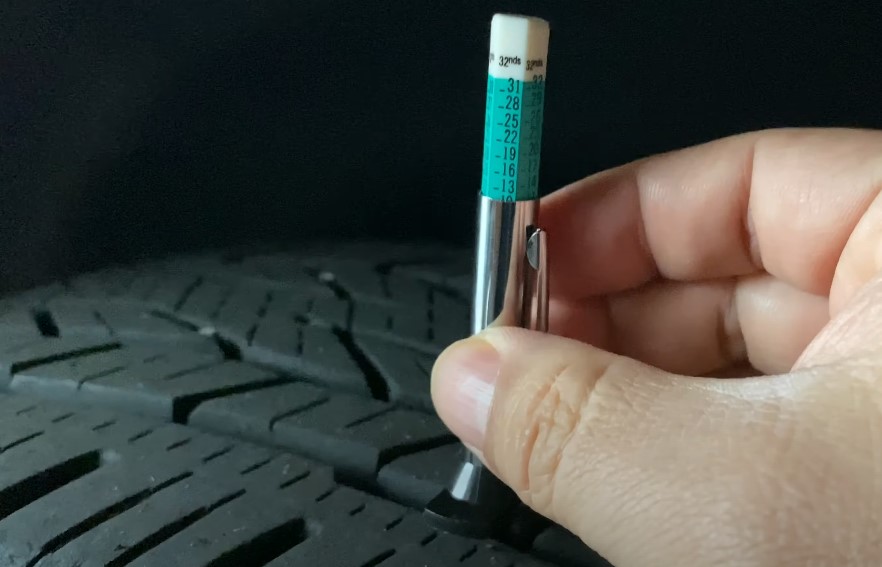
You don’t need a tire shop or special scanner to know where your tread stands. In fact, you probably already have what you need in your wallet.
Penny Test
It’s old school, but still works.
- Grab a penny and stick it into your tire’s groove with Lincoln’s head facing down.
- If you can see the top of his head, your tread is below 2/32 inch and needs replacing.
Tread Depth Gauge
If you want precision (or like gadgets), spend a few bucks on a tread depth gauge.
- Insert the probe into the tread.
- Read the number in 32nds of an inch or millimeters.
- Check multiple spots around the tire for uneven wear.
Tread Wear Indicator Bars
Most modern tires have TWI bars molded into the grooves.
- If the tread is flush with those bars, you’re at 2/32 inch.
- Time for new tires.
| Method | Legal Threshold | Notes |
| Penny Test | 2/32 inch | Quick and easy; not super precise. |
| Tread Depth Gauge | 2/32 inch | Best for regular maintenance and accuracy. |
| Wear Indicator Bars | 2/32 inch | Built into tires for easy monitoring. |
New Tire Tread Depth
When you buy new tires, the tread usually starts between 10/32 and 11/32 inch, depending on the type:
- Passenger All-Season Tires: Around 10/32 inch
- Truck or SUV Tires: Can go up to 12/32 inch
- Winter Tires: Often deeper for snow traction
So when you’re down to 2/32 inch, you’ve lost around 80% of that tread life.
Why It Matters
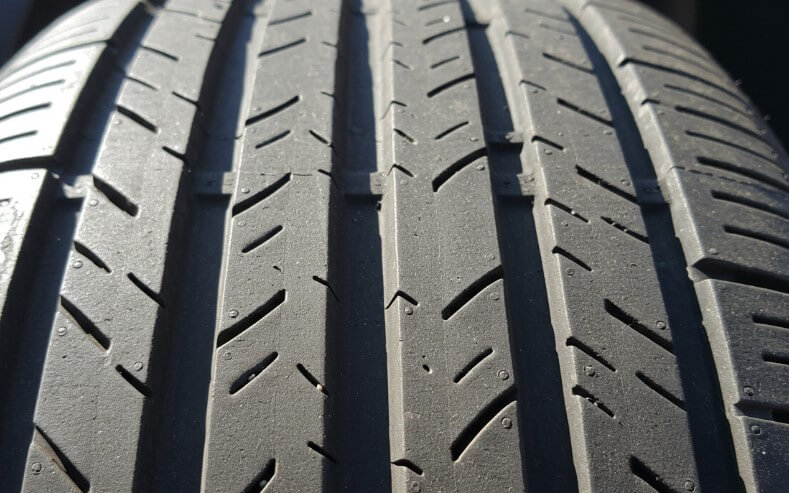
It’s not just about passing inspection. Tires with shallow tread create real safety risks.
Hydroplaning and Traction
Deep grooves push water out from under your tires. As the tread wears down, water has nowhere to go, and your tires can float on the surface. That’s hydroplaning, and it’s a fast track to losing control.
Braking Distance
Tires with worn-out tread need more distance to stop. According to tire experts:
- At 2/32 inch, your stopping distance on wet roads is 36.8% longer than with 4/32 inch tread.
- That gap can mean the difference between a near miss and a rear-end crash.
Blowout Risk
Thinner tread means thinner rubber. The chance of a tire failure or blowout goes up dramatically when you’re running on bald tires.
Fuel Efficiency
Worn or uneven tires can reduce your car’s efficiency. That adds up at the pump, especially if your tires are poorly inflated on top of being worn.
What Happens If You Don’t Comply?
Rolling on illegal tires might not seem like a big deal until it is.
Fines and Tickets
In many states, getting pulled over with illegal tread depth can cost hundreds, even up to $2,500 per tire in some cases.
Failed Inspections
If your state requires annual vehicle safety inspections (like Texas), shallow tread means you won’t pass. You’ll need to replace the tires before you’re allowed back on the road.
Insurance Problems
If you’re in a crash and investigators find your tires were bald, your insurer might deny the claim. Especially if the tread depth played a role in the accident. That means you could be footing the bill for damage or medical costs out of pocket.
Don’t Wait for the Minimum, Replace Earlier
Experts across the board agree, you’re better off replacing tires before they hit 2/32 inch.
Here’s what the pros suggest:
| Source | Recommended Replacement Tread | Why |
| Tire Rack | 4/32 inch (wet roads) | Better braking and hydroplaning resistance |
| Michelin | Above 2/32 inch | Maintains grip and handling performance |
| Bridgestone | 4/32–5/32 inch | Safer in rain and snow |
Tire Maintenance Tips That Actually Work
Keeping your tires in good shape isn’t hard; it just takes a little attention. Here are some habits worth picking up:
| Practice | How Often | Why It Helps |
| Check Tread Depth | Monthly | Catch wear before it becomes a problem |
| Tire Pressure Check | Every 2 weeks | Prevents uneven wear and improves mileage |
| Rotate Tires | Every 5,000–8,000 miles | Helps tread wear evenly across all tires |
| Wheel Alignment | Yearly (or as needed) | Fixes handling issues and uneven wear |
| Don’t Overload | Always | Excess weight stresses tires |
| Drive Smoothly | Always | Harsh braking and sharp turns wear tires faster |
Special Note on Winter Tires
If you’re driving in snow, you want at least 5/32 inch of tread. Below that, snow can’t pack into the grooves effectively, and you lose traction fast.
Your Tires Are Talking. Listen to Them.
In most of the US, 2/32 inch is the legal tread depth limit for passenger vehicles. But in states like California and Idaho, the bar drops to 1/32 inch, and in Texas, inspection standards raise it to 3/32 inch. Commercial vehicles face even stricter rules – 4/32 inch on front tires.
It doesn’t take much effort to check your tread: use a penny, pick up a gauge, or look for the built-in wear bars. Keep an eye on your tires monthly, rotate them regularly, and replace them before they hit the legal minimum.
Your tires are the only thing keeping your car connected to the road. Whether you’re cruising on dry pavement or hitting a rain-slicked highway, having enough tread can mean the difference between staying in control and spinning out.
So don’t wait for the law to tell you when it’s time. When your tires start to go bald, it’s not just illegal, it’s also unsafe.






